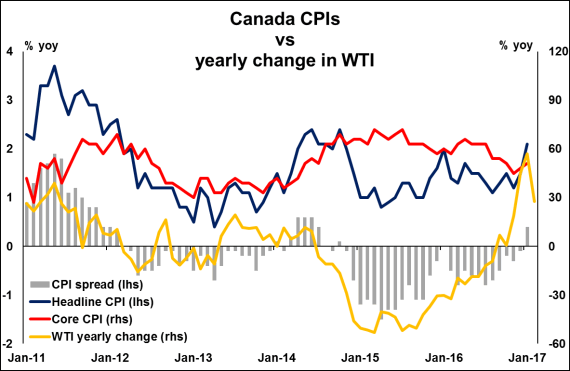Next week’s market movers
- In New Zealand, the RBNZ is likely to remain on hold and maintain its dovish bias amid lackluster economic data and elevated uncertainty around global trade.
- In the UK, CPI figures for February could impact market expectations with regards to near-term policy tightening by the BoE.
- We also get key economic data from Eurozone, the US, and Canada.
On Monday, we have a relatively light day, with no major events or indicators due to be released.
On Tuesday, the UK will release its CPI data for February. The forecast is for both the headline and the core rates to have risen, something supported by the UK services PMI for the month, which showed that rapidly rising input costs led to the largest increase in prices charged by service providers for eight-and-a-half years. At the latest BoE gathering, some members noted that they would consider reducing stimulus should there be any further upside news on the prospects for growth or inflation, while Kristyn Forbes actually voted for an immediate hike. This suggests that in case the CPIs accelerate further as expected, then the next big market theme could well be whether the BoE will reduce its asset purchases, or even hike rates at some point in the foreseeable future. At the very least, accelerating inflation is likely to lead to more hawkish dissents in coming months, assuming that economic growth remains robust. Having said all these though, we are skeptical as to whether we will actually see a BoE rate hike in the near-term, mainly because the Bank is unlikely to rush into monetary tightening before the Brexit negotiating landscape becomes clearer.
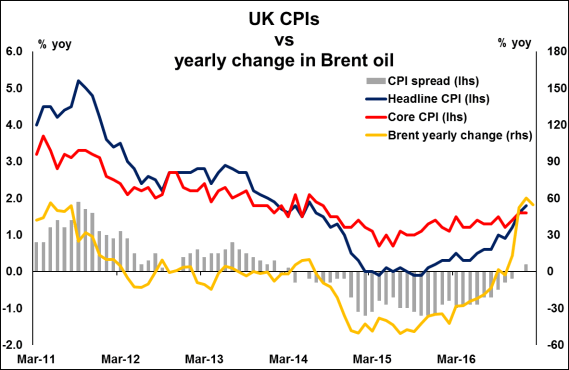
On Wednesday, late during the day, the RBNZ rate decision will be in the spotlight. At its latest gathering, the Bank retained its easing bias despite improving domestic economic data. Policymakers indicated that numerous uncertainties persist, particularly in the global outlook, and policy may need to adjust accordingly. As was later explained by Governor Wheeler, this was a reference to the risks surrounding exports and the prospect of increased global protectionism. What’s more, the officials reiterated that a decline in the Kiwi’s exchange rate is needed, something that became reality following their dovish policy signals. Since that meeting, economic data have been lackluster. Although the nation’s terms of trade improved in Q4, GDP growth slowed notably in the quarter, much more than the RBNZ’s own forecasts. To make matters worse, economic growth for Q3 was revised lower. Bearing also in mind that the aforementioned global risks remain elevated, we see no material reason for the Bank to shift to a more upbeat tone, especially since something like that could trigger a surge in NZD. Despite the fact that we expect the Bank to maintain a dovish bias though, we do not expect the officials to actually take action in the foreseeable future, barring some unforeseen shock. This view is amplified by the fact that the nation’s 2-year inflation expectations have rebounded notably in recent quarters, alleviating some pressure from the Bank to take further steps in order to boost inflation.
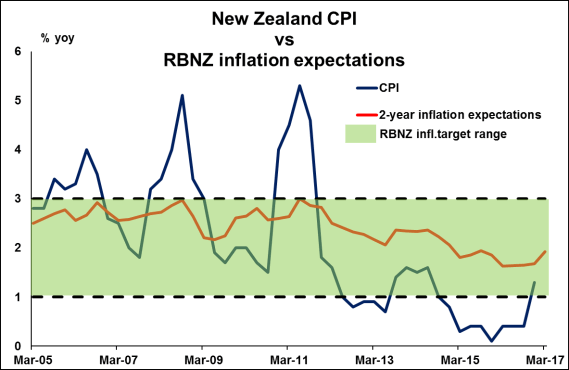
On Thursday, the only major indicator we get is UK retail sales for February, but no forecast is presently available. Consumer sentiment indicators were mixed during the month. The TR/IPSOS figure declined, and while the Gfk index ticked up, it remained negative. The combination of these prints does not paint a clear picture about consumer optimism in the month. The fact that the BRC retail sales rate rose somewhat, but also remained negative, does not make the situation any clearer. Our own view is that both the headline and core rates are likely to have remained unchanged within the negative territory, with risks skewed to the upside. We base that on the hypothesis that if consumer demand was to continue deteriorating, it would be more clearly visible on the aforementioned sentiment indicators, we think.
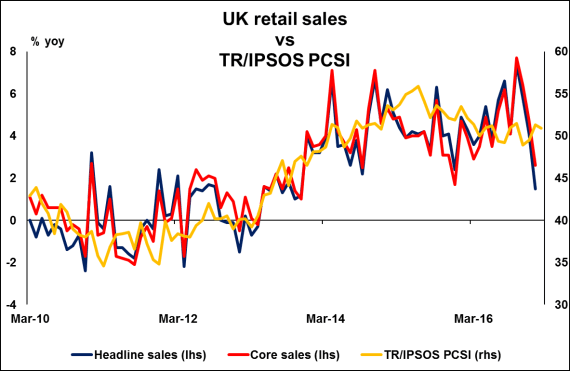
On Friday, we get the preliminary manufacturing and services PMIs for March from several European nations and the Eurozone as a whole. Most of these indices are expected to have ticked down, but to still remain at elevated levels. Considering that all of these surveys are expected to show that Eurozone’s economy continues to perform well, we believe that they are likely to be another set of pleasant news for ECB policymakers, who at their latest meeting shifted to a more optimistic tone. Although President Draghi reiterated that there is no convincing upward trend in the core CPI yet and as such the Bank will keep its stimulus program unchanged, he made it clear that there is diminished willingness among the Governing Council for any more extraordinary easing measures. If incoming data continue to show that economic growth and inflationary pressures are gradually picking up, then we would expect the ECB to drop more dovish aspects of its forward guidance in coming meetings. We think that the Bank’s next step is to remove the word "lower" from the reference regarding rates remaining at current, or lower levels in the foreseeable future.
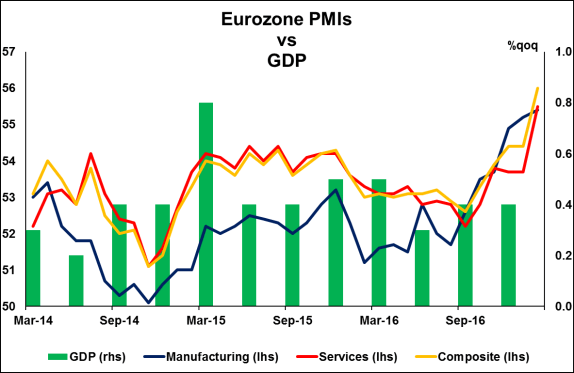
From the US, we get durable goods orders for February. Expectations are for the headline rate to have risen for the second consecutive month, while no forecast is available for the core figure. Our own view is that the core figure likely rose as well, after a minor slide in January. We base our expectations on the nation’s ISM manufacturing PMI for the month, where the New Orders sub-index rose notably, indicating a rising pace of increase in new orders. What’s more, US civilian aircraft orders were decent during the month, which further supports the forecast for another increase in the headline rate.
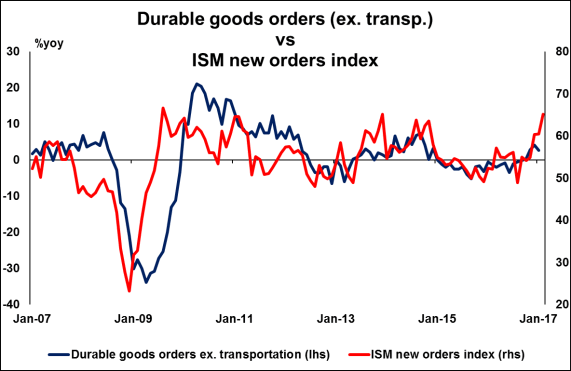
From Canada, we get CPI figures for February. In the absence of a forecast, we see the case for the core rate to have ticked up, but we are mindful on whether the headline rate followed suit. Our view for the core rate is based on Canada’s Markit manufacturing PMI survey for February, which indicated that as a result of increased cost pressures, there was a solid increase in the prices of finished products. However, February’s yearly change in oil prices suggests that the headline rate could stay unchanged, or even tick down, as energy-related effects start to filter out of the yearly CPI calculation. Although a potential acceleration in core inflation is likely to be an encouraging development for BoC policymakers, we do not expect this to lead to a material shift in their dovish tone. At its latest meeting, they did not appear particularly worried about inflation, but they did maintain a cautious tone with regards to exports, which continue to face competitiveness challenges as they noted. This was a hint that the strength of the Canadian dollar is muting the outlook for exports and as such, we expect BoC officials to maintain a relatively dovish tone in the foreseeable future, despite any modest progress in economic data.
